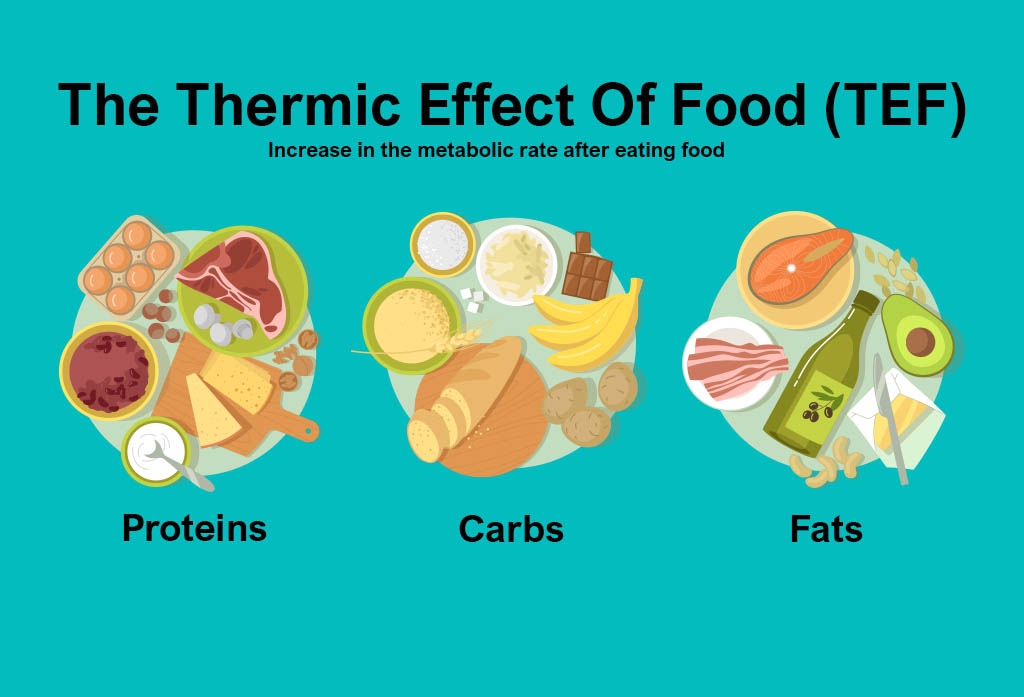The thermic effect of food (TEF) refers to the increase in energy expenditure that occurs during the digestion, absorption, and metabolism of food. Certain foods have a higher thermic effect, meaning they require more energy to be digested and can potentially boost metabolism. Here are some examples of foods with a relatively high thermic effect:

- Protein-Rich Foods:
- Protein has the highest thermic effect among the three macronutrients. It requires more energy to digest and absorb compared to carbohydrates and fats. Include foods like lean meats (chicken, turkey), fish, eggs, legumes, and tofu in your diet to benefit from their high thermic effect.
- Fibrous Vegetables:
- Fibrous vegetables, such as broccoli, cauliflower, kale, spinach, and Brussels sprouts, are low in calories but high in fiber. The body expends energy to break down the fiber during digestion, contributing to a higher thermic effect.
- Whole Grains:
- Whole grains, such as oats, quinoa, brown rice, and whole wheat bread, contain more fiber and complex carbohydrates than refined grains. The body requires additional energy to digest and process these whole foods, resulting in a higher thermic effect.
- Spicy Foods:
- Spicy foods, particularly those containing capsaicin, like chili peppers, can temporarily increase metabolism and boost the thermic effect. This effect is due to the body’s response to the heat generated by spicy foods.
- Green Tea:
- Green tea contains compounds like catechins and caffeine, which can increase energy expenditure and fat oxidation. Drinking green tea may temporarily enhance the thermic effect and metabolic rate.
- Citrus Fruits:
- Citrus fruits, such as oranges, grapefruits, and lemons, are rich in vitamin C and fiber. The body requires energy to break down the fiber and absorb the nutrients, contributing to a higher thermic effect.
- Cold-Water Fish:
- Cold-water fish like salmon, tuna, and mackerel are high in omega-3 fatty acids and protein. The body expends more energy to digest protein, and omega-3 fatty acids may have a modest effect on metabolism, contributing to a higher thermic effect.
- Water:
- While not a food, consuming cold water can temporarily increase the thermic effect. The body uses energy to warm the water to body temperature, leading to a slight boost in metabolism.
It’s important to note that the thermic effect of food is relatively small compared to other factors influencing overall energy expenditure. However, incorporating these foods into a balanced and healthy diet can contribute to a slightly increased metabolic rate and potentially support weight management efforts.
As an Amazon Associate we earn from qualifying purchases through some links in our articles.




